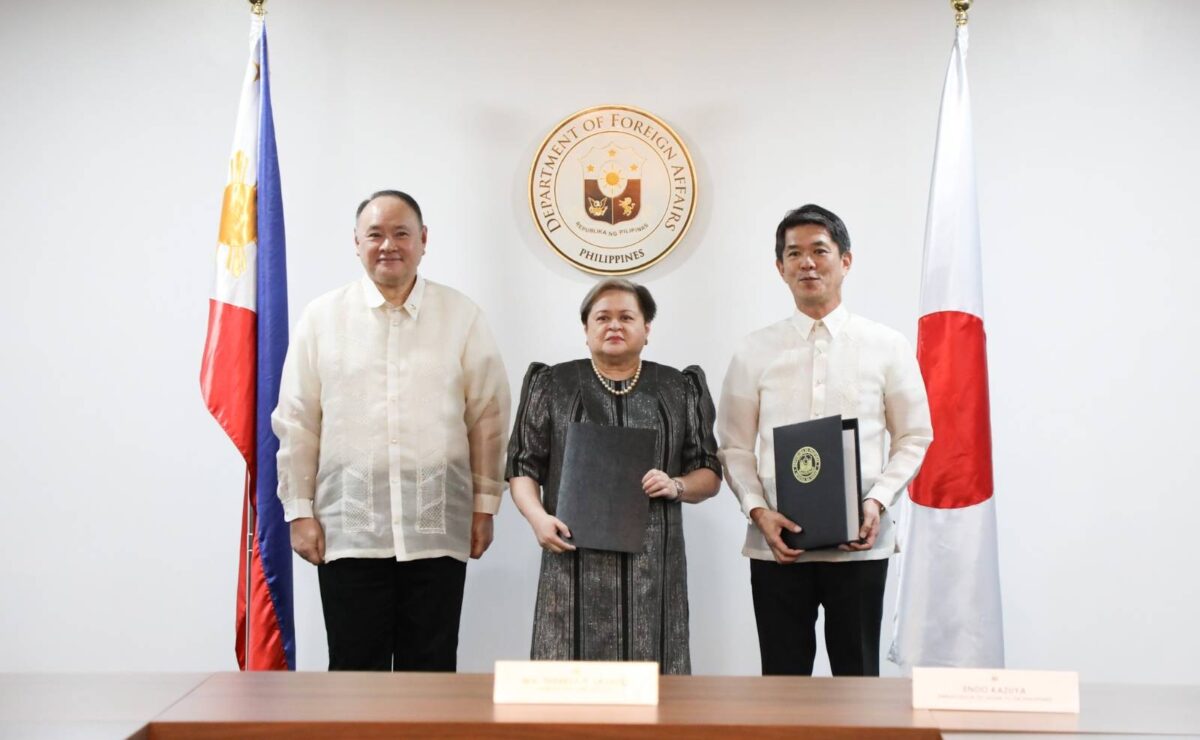PH, Japan take key step in activating visiting forces pact

Defense Secretary Gilberto Teodoro Jr. (left) graces the exchange of notes of Maria Theresa Lazaro and Japanese Ambassador to the Philippines Endo Kazuya for the Reciprocal Access Agreement (RAA) at Department of Foreign Affairs headquarters on August 12. —Photo from the Department of National Defense
MANILA, Philippines — The Philippines and Japan on Tuesday took a crucial step to activate its now-ratified Reciprocal Access Agreement (RAA) in what Defense Secretary Gilberto Teodoro said will serve as “deterrence” against common threats faced by both countries.
Teodoro graced the exchange of diplomatic notes for RAA led by Department of Foreign Affairs (DFA) chief Maria Theresa Lazaro and Japanese Ambassador to the Philippines Endo Kazuya.
The exchange of notes on August 12 will lead to the activation of the RAA on September 11 or 30 days after the ceremony.
READ: PH, Japan hold joint drills after RAA
“The entry into force of the RAA is a logical and necessary step forward in the long and meaningful history of Philippine-Japan relations,” Teodoro said in his speech before the exchange of toast. “It also serves as a deterrent to those who do not share our values.”
In a chance interview after the brief ceremony, Teodoro was asked to clarify if he is referring to China in his “deterrent” remarks.
To this, he said: “Well, when we band together against some country … for example, China. We share the same challenges with Japan.”
READ: PH Navy to inspect Japanese warships before ‘possible transfer’
“There’s no denying that,” he went on. “And it’s useless to deny it because it’s the truth.”
Manila and Tokyo have territorial disputes with Beijing over the maritime features in the West Philippine Sea and Pinnacle (Senkaku) Islands, respectively.
The RAA was approved by the Japanese diet on June 6, 2025, while the Philippine Senate already green lighted the treaty on December 16, 2024.
The RAA, also known as a Status of Visiting Forces Agreement (SOVFA), provides a legal and administrative framework for the entry and departure of the defense forces, vessels, aircraft and equipment of a party from the territory of the other party, for the purpose of training and conducting activities mutually agreed upon by the parties, according to the DFA.
Japan is the third country where the Philippines had a visiting forces deal, aside from Australia’s SOVFA, and United States’ Visiting Forces Agreement.
In line with the deepening defense ties between both nations, Tokyo offered six of its Abukuma-class destroyers to Manila, and the latter said it would have to inspect the warships.
Two of the Philippine Coast Guard’s (PCG) 97-meter multirole response vessel (MRRV)—BRP Teresa Magbanua and BRP Melchora Aquino—were purchased from Japan, and both of them have been used to patrol the West Philippine Sea.
The PCG has since procured another five 97-meter MRRVs from Japan, the first of which are expected to arrive in 2027. /cb


















